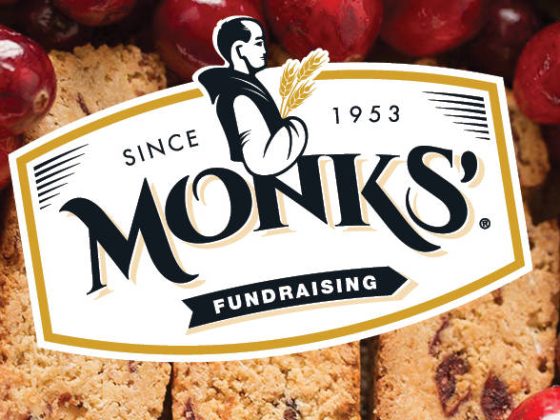This summer, I had the wonderful opportunity to sit down and chat with Fr. Marcus Voss (now Abbot Marcus) to talk about Monastic Fundraising. Before his election to the office of Abbot this summer, he spent nearly 30 years as the Director of Development for St. Bernard’s Abbey. In addition to housing dozens of monks, St. Bernard’s runs a boarding and day school for students in grades 7-12. The monastery grounds also features the Ave Maria Grotto, a four acre park with miniatures of world landmarks created by Brother Joseph Zoettl.
My conversation with the Abbot focused on fundraising, and specifically on the types of fundraising that he has done to keep St. Bernard’s going. Rather than relying on one type of fundraising, his fundraising program uses a number of fundraising programs that work together. Using different types of fundraising is crucial to developing a what is called a “broad base of support.”
The phrase “broad base of support” suggests a building with a firm foundation. And for the fundraiser, that is exactly what it means. Having a broad base of support means that the monastery is not dependent on any single fundraising strategy to raise the money they need for continued operations. If one of the fundraising strategies doesn’t work as planned, the others can fill the gap.
What does a broad base of support look like?
The primary fundraising programs that the Monastery uses are as follows:
Let’s look at each of these fundraising programs in a little more detail.
Tuition – fee for service.
St. Bernard’s Preparatory School, like most private Catholic schools, charges tuition. Like many Catholic schools, the revenue generated by tuition is not enough to cover the costs of the school. This kind of revenue stream is called “fee for service.”
Fee for service revenue is more common in some types of non-profits than in others. It’s quite common for schools, medical ministries, job training ministries, etc. It’s less common for human services ministries like food pantries and soup kitchens.
The the fee should be appropriately scaled for the services offered. St. Bernard’s offers two different levels of tuition for students who live on campus and for day students. It is to be expected that boarding students will have higher fees than day students because they are being provided with room and board.
Direct Mail.
Abbot Marcus sends two fundraising letters to his donors every year.
During giving season (October -December, the givingest time of the year), he sends out a general appeal letter. This letter comes out right before Christmas and goes to every person in their donor database. Their alumni and supporters have come to expect the appeal and respond generously. Half of the revenue from the letter goes to support the school and the other half goes to the monastery.
The second direct mail piece goes out at the end of the school year and typically focuses on some practical need at the monastery. One year, they used the funds to replace sidewalks that were in terrible disrepair. Another year, they used the funds to fix the elevator in the dormitory where the monks live. The response to this letter is about half that of the Christmas letter, but donors have responded well to meeting a physical capital need.
Events – Spring and fall festivals.
The monastery sits on a beautiful old farm property covering several hundred acres. This means they have lots of space for people to come and visit.
Each spring, they host the Bloomin’ Festival, a regional arts and crafts fair that draws hundreds of high quality vendors and more than 25,000 visitors over the course of several days. As you can imagine, this is a massive undertaking. Volunteers for the school play a huge role in planning and executing this enormous event. They jury the vendors before allowing them to register, ensuring that only high quality crafts are displayed. The monastery makes money from vendor registrations, business sponsors, and admissions.
In the fall, they host the Bernard Blues and BBQ, a weekend event with crafts, live music, and lots of smoked meat. Like the Bloomin’ Festival, it brings in money from vendor registrations, admissions tickets, and business sponsors.
The other revenue stream from these two events deserves its own heading: raffles.
Raffles – win (or lose) for a good cause.
Both of the monastery’s big events feature large raffles as one of their largest money makers. They do this by offering premium prizes that attract lots of tickets sales. For example, this year the grand prize for the Bloomin’ Festival was a brand new Jeep Renegade and the Blues and BBQ grand prize was $10,000.
With prizes this large, they can’t leave ticket sales up to chance. Of course, tickets can be purchased at the door to the event, but they also mail out cards announcing the raffles and providing a way to buy tickets to thousands of people in the community. People who don’t even come to the event are invited to buy raffle tickets. Abbot Marcus said that this mailing serves a dual purpose, because some people make a straight donation in response to the card.
Periodic Capital Campaign.
Capital campaigns are a lot of work, but there’s no other way to get big things done at the monastery. So Abbot Marcus tries to do a big capital campaign every 6-7 years. He told me that a place like Notre Dame starts a new campaign immediately after they close a their last one, but St. Bernard’s doesn’t have the staff resources to do so.
Their recent campaigns have ranged from $2-5 million, and have built a new Gym, restored the library, and supported the Ave Maria Grotto. The format for the capital campaign is pretty standard. The big challenge of the campaign is that Abbot Marcus has to raise this money in addition to the other money that he’s raising. Running a capital campaign doesn’t mean that he gets to take a break on all of the other fundraising programs that he’s doing. It just means extra work.
The bulk of the capital campaign is face-to-face, major gift fundraising. If you want big gifts, you have to ask in person. Abbot Marcus travels the country meeting with St. Bernard’s big supporters to secure the gifts needed. He views it as a ministry, though… a way of inviting people who love St. Bernard’s to get involved in improving the monastery and school.
Abbot Marcus told me that the key to raising big gifts is silence. First, he would present the capital campaign objective and ask, “Would you consider a gift of $1 million to support this project?” Then he would wait quietly until the donor gave his answer. Sometimes the waiting was long… and painful. But once the donor has started to consider, any additional talking is just a distraction. Wait for the answer.
Planned giving push.
To help with the cultivation of planned gifts, St. Bernard’s started a perpetual endowment called the Clairvaux Society Foundation. The endowment is set up to receive gifts that will be invested prudently to produce income for the operations of the school for generations.
Several years ago, the Abbot Marcus partnered with an insurance company to create a unique giving opportunity for the endowment. Key donors were offered the opportunity to purchase insurance policies that would benefit the endowment. It is a way for donors to multiply the impact of their gift.
For example, a $10,000 gift might be used to purchase a $50,000 life insurance policy that goes to the endowment at the donor’s passing. The ending value of the policy depends on the premium paid and the age and health of the person ensured.
This campaign was highly successful, creating millions of dollars worth of “expectancies.” An expectancy is a planned gift that will occur at some future date. One of the nice things about being a part of a religious order that has flourished for nearly 1,500 years is that planning for the long term is in the organizational DNA.
Grant writing.
In recent years, St. Bernard’s has hired a grant writer who focuses on raising money using grant submissions. It has been highly successful. The school has a long track record of success, good governance, and a plan for the future, all of which are important for a successful grant program.
Behold the firm foundation.
Abbot Marcus has worked hard for decades to lay a firm fundraising foundation for St. Bernard’s. As you can see, excellent monastic fundraising is not a one trick pony. It requires multiple fundraising programs to ask potential donors in several different ways. No one technique by itself would be enough to make it happen.
Near the end of our chat, I asked Fr. Marcus the most important thing he’s learned about raising money. He thought about it a moment and then told me about one of his fundraising mentors. On his desk he kept a sign that said, “If I can read this sign, I’m not doing my job.”
Fundraising is not about money. It’s about people. And giving them the opportunity to do something that they think is important. Something exciting. Something that they can’t do without you. They just don’t know about it until you ask them. That means you have to get out of your chair and go talk to them.
Looking for more information on the topics covered in this article? Try these:
- How do I raise money with direct mail?
- How do I run a successful event fundraiser?
- Can I run a raffle?
- How do I run a capital campaign?
- What is planned giving?
- How do I write grants?
Check out The Fundraiser’s Playbook for a full list of fundraising articles.
Would you like to learn more about raising money for Church and Ministry? Check out Letters From The Almoner, now available on Amazon.com.
Image courtesy of Wikimedia Commons, via Creative Commons License, no rights reserved.









